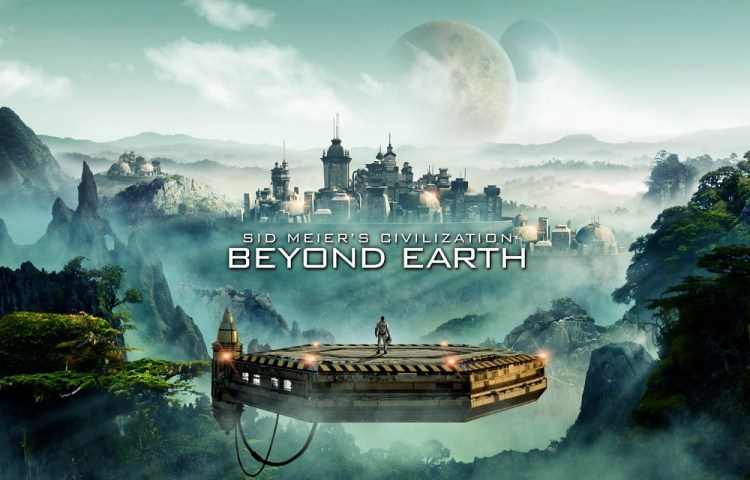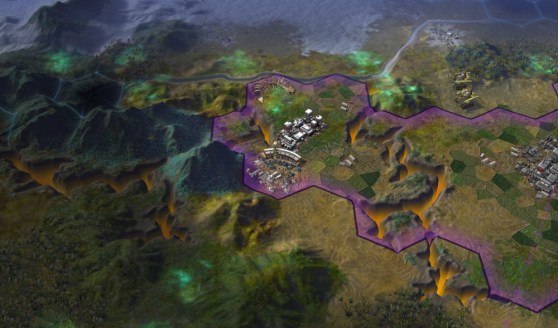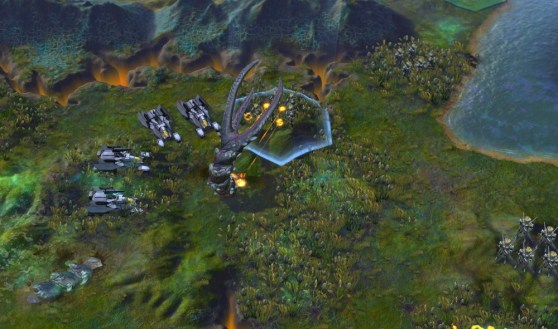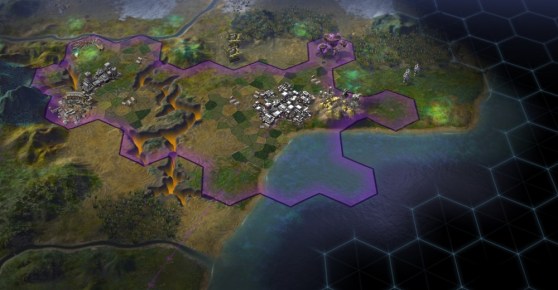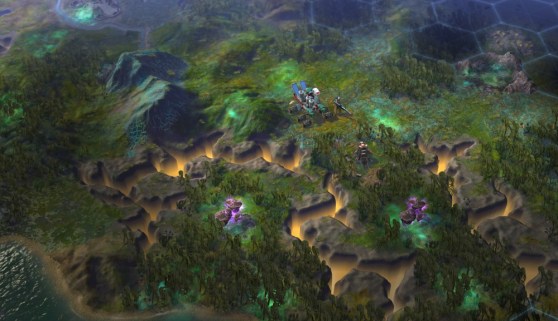I enjoyed a brief hands-on preview of Sid Meier’s Civilization: Beyond Earth, mainly because I stayed away from the worms. The giant Siege Worms in the PC game will periodically emerge and ruin the civilization that you’re so desperately trying to establish on an alien planet in Beyond Earth. If you disturb a nest of these worms, it’s a quick way to lose your city in the latest sci-fi version of the Civilization series.
The 2K Games division of game publisher Take-Two Interactive Software recently said that Firaxis Games is making the latest Civilization game for the Windows PC, Mac, and Linux this fall. In contrast to many previous Civ games that start with ancient societies, this one begins as humanity escapes global warming on Earth and heads for the stars.
At the outset of Civilization: Beyond Earth, you make some decisions about which colonists you will take with you, your cargo, and what type of leader you want. You choose one of three different types of societies. Once you make these abstract decisions, you then emerge on a planet with your colony. From there, you’ll recognize the typical hexagon-based map of the world, with dark blotches for unexplored areas. Although we’re in the space age, movement across the terrain is still unbearably slow, given the large scale of the map and the usual slow-paced gameplay you expect in a Civ game.
“One of the tips I can offer is that you don’t need to attack the aliens from the outset,” said Pete Murray, associate producer of the game, in a briefing with the press. “The aliens are like a faction. If you aggressively fight them, they will begin to think less of you. You may want to think twice about shooting the first aliens you see.”
I got a good look at one of the pre-alpha demos that Firaxis will show at the upcoming Electronic Entertainment Expo (E3) trade show in June in Los Angeles. The city-devouring worms may remind you of the giant sandworms from the sci-fi novel Dune, but this game draws inspiration from many souces. The title is a lot different from the original Civilization of 1991, as well as the last space-based Civ game, Sid Meier’s Alpha Centauri, which debuted in 1999.
You can choose three different “affinities” for your society: harmony, purity, and supremacy. With Harmony, the goal is to alter the human identity through DNA modifcation so that it achieves symbiosis with the new planet. As a pursuer of Harmony, your visual identity is unique.
The Purity affinity is a return to the classical Greek or Roman views of the world from Earth’s past in the way that they prefer to change the world to suit humans. In this view, they also don’t want humans to occupy just a single planet. Any research you pursue in the technological web can be used to improve your progress toward your affinity goal.
Supremacy is the road where humans try to dominate their world and environment, and they try to live independent of the world. The Supremacist societies turn to tools to overcome the environment, and they develop unique technologies and architectures for their cities. You can research things like “synthetic thought” that will increase the affinity for Supremacy. But the technology tree is more like a technology web, when it comes to research advances. You can pursue research in very different directions, depending on the type of society you want to develop.
Different factions are more likely to go to war if they pursue different affinities. In my playthrough, I made peace with my neighbors and concentrated on attacking the alien species so that they would leave my lone city alone. After all, if they took down my city, my game was over.
The hexagon-based world was pretty hazardous, and you should learn what those hazards are as quickly as you can. There’s some rift chasms with glowing magma that represent a barrier for movement. There’s a dangerous green miasma that will do damage to your units if you end your turn in the same hex as the miasma. Some purple rocks are a resource dubbed Floatstone, which will be useful in future construction.
One of the termite-like structures near my city was an alien nest, filled with long-range attackers dubbed Manticores as well as short-range infantry-like fighters. My explorer was lightly armed, so I used it to move around the enemies and explore the world. Meanwhile, I quickly built a couple of soldier infantry units to fight off the aliens. The combat is much like previous Civ games. You have one unit per hexagon, and you move next to an enemy unit to attack it. You can use ranged units to fire as far as two hexagons away, softening up enemies with artillery before attacking with infantry.
I quickly ran into other civilizations that were also colonizing the planet. For the time being, I established open borders with them and worked toward establishing trade agreements.
“You create the story as you go through the game,” said Murray. “But you can pursue quests that provide more interaction and additional points in the plot.”
All around me, my fellow colleagues in the press were falling victim to the giant worms. But once I avoided attacking them, the worms started to lose interesting in destroying my buildings.
Players will also play on a new orbital layer, where they can deploy advanced military, economic, and scientific satellites that provide strategic offensive, defensive, and support capabilities from orbit. I wasn’t able to try that out yet, but it looks like one of the more interesting elements of the game that can make the world into a three-dimensional environment.
Each world has a different “biome,” or basic environmental theme. You can have a “lush biome” that resembles a jungle world, a “fungal biome” with very strange fungi all over the place, and an “arid biome,” or desert world. As you move from tile to tile, you discover resources or nests of aliens embedded in the world.
Among the human leaders in the game are Daoming Sochua, leader of the Pan-Asian Cooperative; Samatar Jama Barre of the People’s African Union; Kavitha Thakur of the Kavithan Protectorate; and Suzanne Marjorie Fielding of the American Reclamation Corporation.
You can create Wonders like the Gene Vault, which preserves the genetic material you brought from Earth. You can create the Panapticon, which makes your society more efficient and protects your borders.
Within your society, you can create a spy agency to find out more things about your neighbors’ intentions and the world around you.
I managed to make it to turn 50 in the demo without losing my city. I discovered a bunch of the neighbors and created a sizable army. As is appropriate in Civ games, I was just happy to survive.
VentureBeat's mission is to be a digital town square for technical decision-makers to gain knowledge about transformative enterprise technology and transact. Learn More
